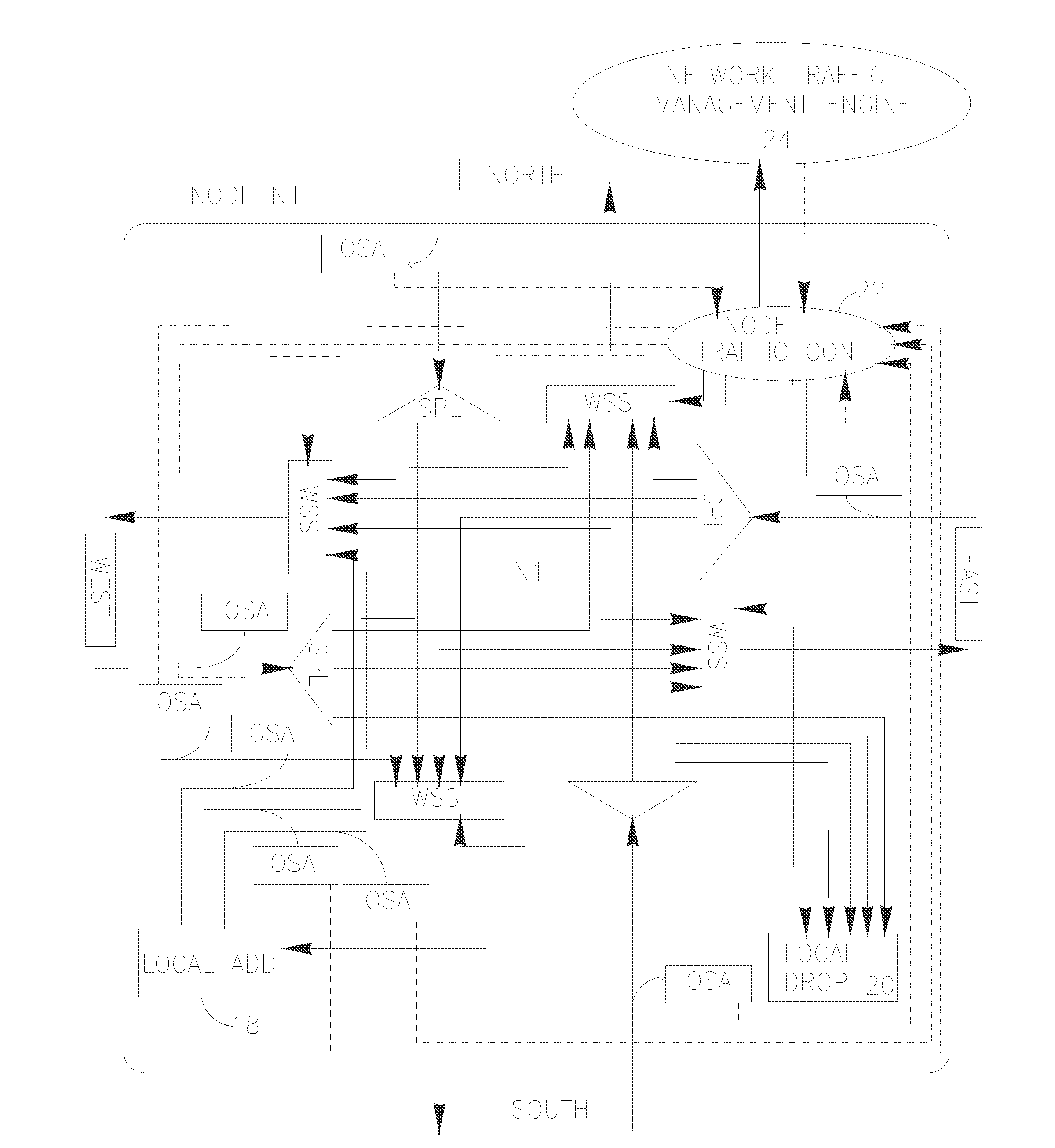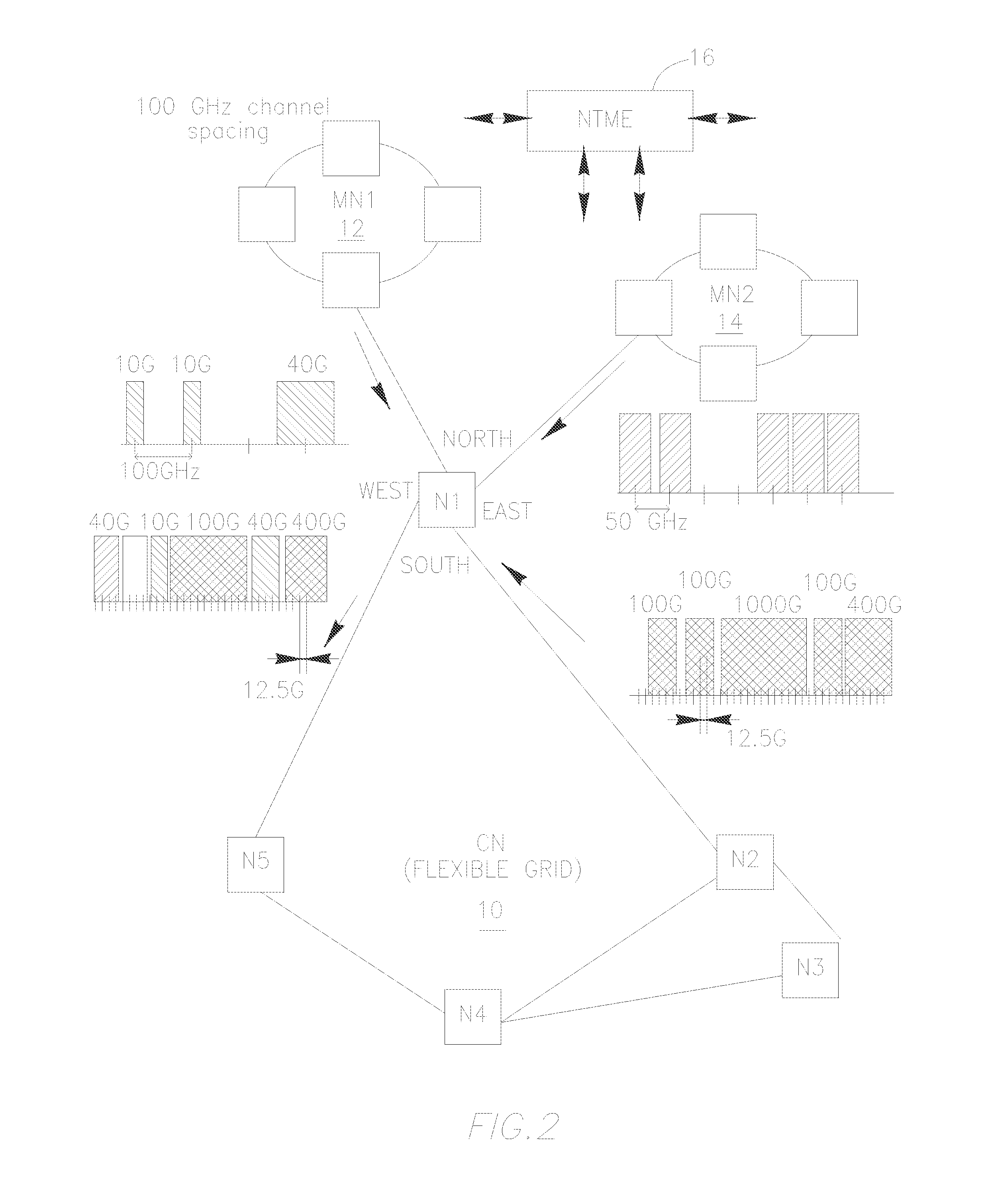Method and a network node for improving bandwidth efficiency in an optical network
a technology of optical network and network node, which is applied in the direction of transmission monitoring, transmission monitoring/testing/fault-measurement systems, electrical devices, etc., can solve the problems of inability to deploy channels with bit rate higher, inability to meet the requirements of bandwidth, and inability to achieve the capacity limit of 50 ghz fixed grid, etc., to achieve the effect of improving bandwidth/spectral efficiency
- Summary
- Abstract
- Description
- Claims
- Application Information
AI Technical Summary
Benefits of technology
Problems solved by technology
Method used
Image
Examples
Embodiment Construction
[0062]FIG. 1A illustrates a conventional 100 GHz channel spacing DWDM channel allocation with 10 Gb / s, 40 Gb / s and 100 Gb / s channels, while FIG. 1b—a bandwidth-flexible DWDM channel allocation which would be suitable for supporting future 1-Tb / s and 400-Gb / s superchannels along with 100 Gb / s channels.
[0063]FIGS. 1A and 1B show an example of comparison of the fixed ITU-T grid and a flexible grid for the C-band. When implementing a flexible grid, issues such as nonlinearity from mixed signal formats, and bit rates and optical power control when the number of channels varies dynamically must be considered. Also, operational and management issues such as channel numbering and bandwidth assignment need to be addressed. ROADMs with flexible bandwidth design are required to support dynamic add / drop of channels beyond 100 Gb / s.
[0064]The channel spacing in modern optical networks is typically 100 GHz, as shown in FIG. 1A; the figure allows seeing essential waste of unused optical bandwidth, ...
PUM
 Login to View More
Login to View More Abstract
Description
Claims
Application Information
 Login to View More
Login to View More - R&D
- Intellectual Property
- Life Sciences
- Materials
- Tech Scout
- Unparalleled Data Quality
- Higher Quality Content
- 60% Fewer Hallucinations
Browse by: Latest US Patents, China's latest patents, Technical Efficacy Thesaurus, Application Domain, Technology Topic, Popular Technical Reports.
© 2025 PatSnap. All rights reserved.Legal|Privacy policy|Modern Slavery Act Transparency Statement|Sitemap|About US| Contact US: help@patsnap.com



